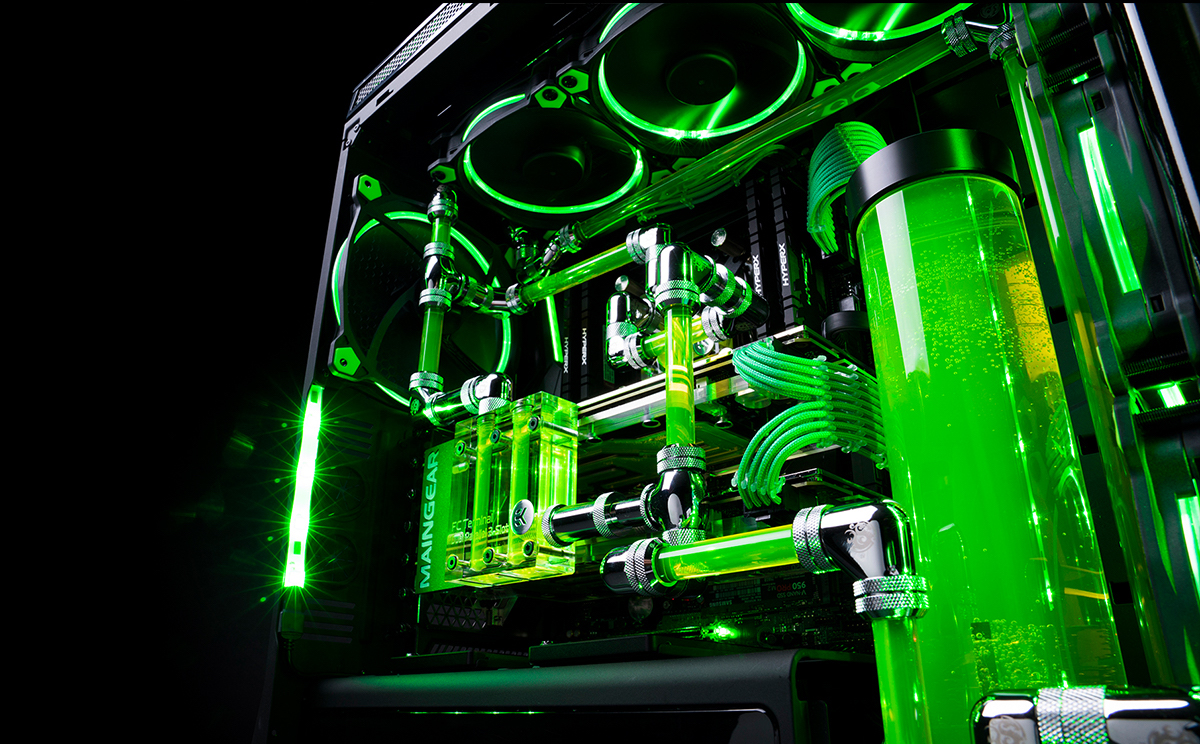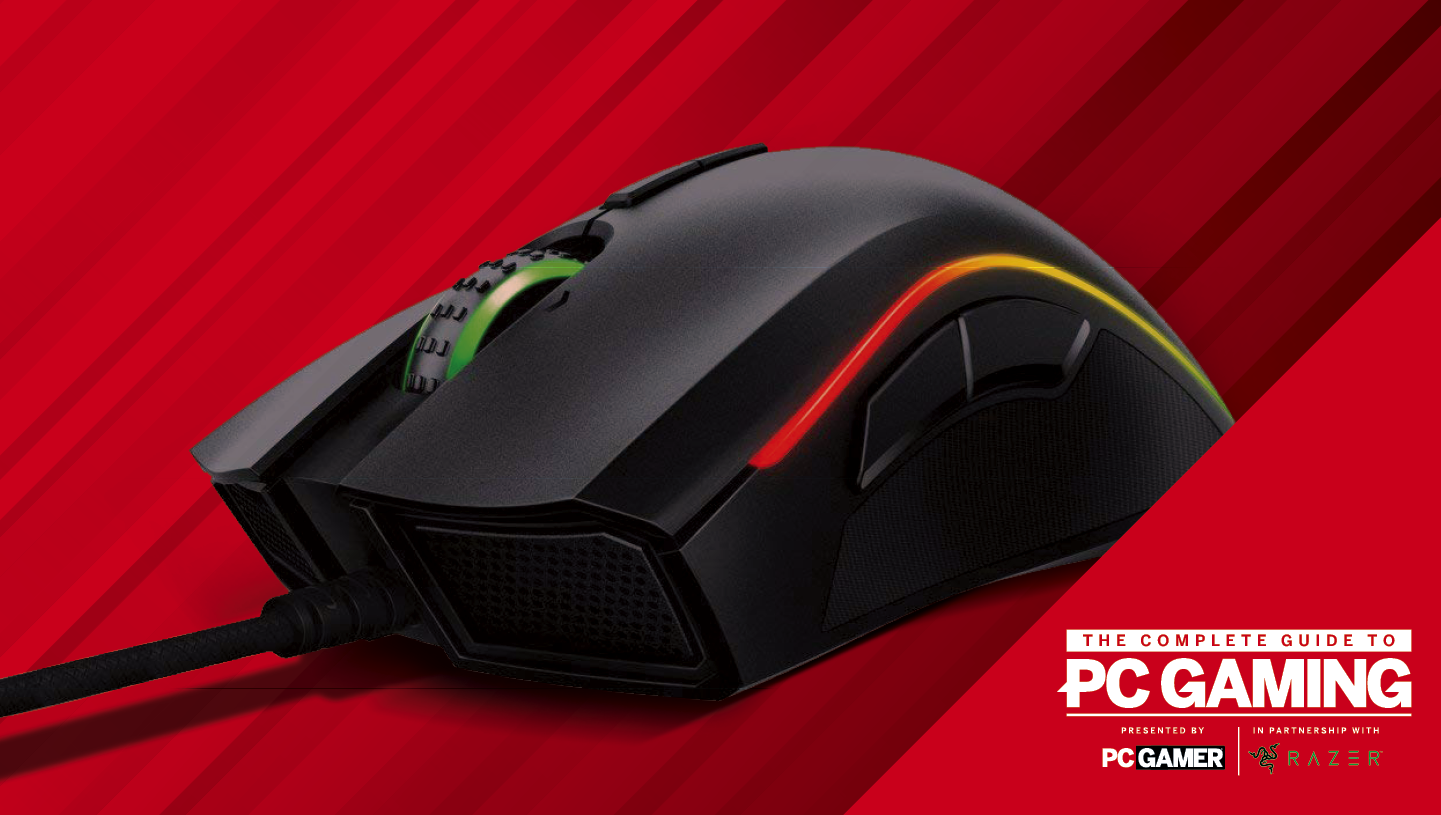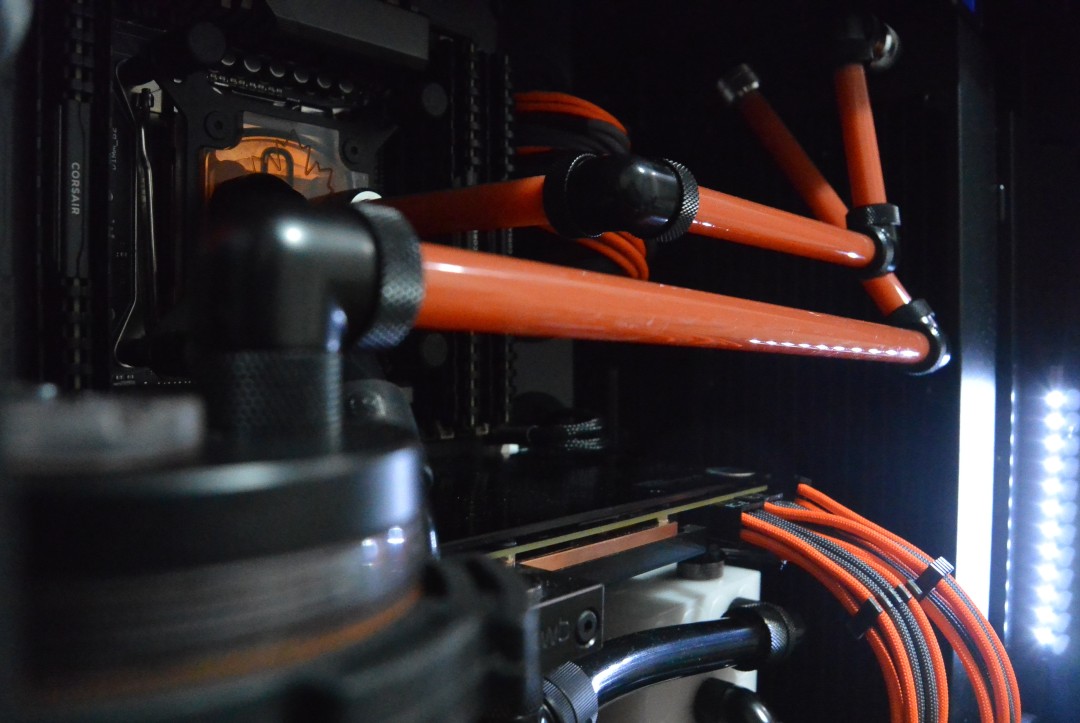Is liquid cooling really a hassle?
Spoiler alert: no.


PC Gamer is going back to the basics with a series of guides, how-tos, and deep dives into PC gaming's core concepts that we're calling The Complete Guide to PC Gaming. There's much more to come, and it's all being made possible by Razer, which stepped up to support this months-long project. Thanks, Razer!
Computer components can get pretty hot during normal usage. Under heavy loads, any part, from your CPU to your SSD, can experience thermal throttling to shed extra heat, and in doing so, sacrifice a significant chunk of performance. But in most cases, air cooling is all you need to keep your system cool. Even for gaming, a decent air cooler and case fans will keep your components operating well below their throttling points. However, if you plan on doing any significant overclocking, or you want a silent system without sacrificing performance, you’ll need to step up to something a bit more serious.
Water cooling systems have advanced significantly over the last decade. While multi-GPU systems can get quite complex, it’s never been easier to setup a basic system to keep one or two components under water. Whether you plan on picking individual parts, looking for a complete kit, or a pre-assembled all-in-one, there are tons of options to get you up and running quickly.
Which option you choose is going to depend on how many components you plan on cooling, and how much additional heat you need to dissipate. Radiator size, pump flow rate, and block design all have a large impact on efficiency.
All-in-one coolers
While cooling setups can get quite complex, all-in-one units like NZXT’s Kraken series coolers, or Corsair’s many offerings, are even easier to get setup than most air coolers. They are designed to provide a taste of the performance offered by custom systems with simple plug and play operation. These types of water coolers all come pre-filled with a set length of tubing connecting the waterblock and pump to the radiator. Because it’s a sealed unit, they require little to no maintenance. They also don’t need to be topped up as they don’t experience evaporation like DIY setups.

In order to maximize compatibility across a wide range of systems, all-in-one units often leave you with more tubing than you actually need. The pump is also mounted to the CPU block which makes them less efficient than custom kits. And, with a much lower price tag, all-in-one units have to sacrifice some performance to keep the units budget friendly. The pumps have a much lower flow rate than standalone units and the included radiators are often thinner and made from less conductive materials. That doesn’t mean all-in-ones aren’t durable, a decent unit can keep your processor running cool for many years, just don’t expect the same headroom you would get from a more robust system.
Custom water cooling
If you are feeling a little more adventurous and want the full performance capabilities of a custom setup without having to pick out each component, certain companies, such as EK, offer kits that include everything you need to put together a basic loop. They often have different radiator options so you can pick a size that fits your performance requirements and space. Then you can cut the included tubing to size and assemble the system. Other than radiator choice, these kits usually have very few customization options. You will receive basic compression fittings, clear tubing, a basic CPU block and a single pump option. Unlike all-in-one coolers, these systems require that you fill them and do the same regular maintenance that you would with a fully custom system. It’s a bigger commitment than an AIO cooler, but allows for future expansion if you wish to add other components, such as your GPU, to the system. You also gain the ability to upgrade specific components without buying a new system. For example, you can change out your radiator to accommodate a smaller case, or upgrade to a stronger pump to allow for some extra headroom when overclocking.

If you’re comfortable assembling a kit, then the only extra hassle with going for an all out custom setup is researching and picking out parts that are compatible with each other and fulfill your performance needs. This option requires the most prep work but isn’t any more difficult to maintain than any of the bundled kits. An entirely custom setup also offers the highest level of customization since you are picking your own parts and can mix and match components from different manufacturers. Nearly every water cooling component on the market uses the same G1/4” threading, which means fittings from different manufacturers will work with other manufacturer’s blocks, pumps and radiators. As long as you use a coolant with anti-corrosive additives, you don’t even need to worry about mixing metals when choosing parts, though aluminum products should always be avoided. The main thing to watch out for is the size of your tubing. There are a few different common tube sizes and appropriate sized fittings need to be selected to provide a tight fit–leaks are the last thing you want.
Keep up to date with the most important stories and the best deals, as picked by the PC Gamer team.
While water cooling can be a big investment, it’s definitely not a big hassle. With so many options on the market, water cooling can be as easy or complex as you want it to be. And with so many online communities built around this once niche hobby, help is always available if you find yourself stuck. With the increasing demands of modern games, there might come a time when some form of water cooling becomes required hardware and there’s never been a better time to get your feet wet.

